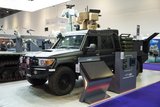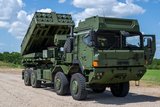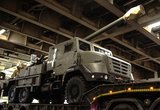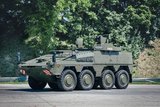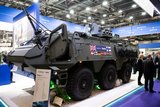Palantir bags $178 million US Army TITAN deep sensing contract
TITAN is a ground system that incorporates space, high-altitude, aerial and terrestrial sensors. (Photo: Northrop Grumman)
Palantir USG has won the US Army Tactical Intelligence Targeting Access Node (TITAN) ground system programme. The service announced the winner of the US$178 million deal on 6 March, under which Denver-based Palantir will build 10 TITAN ground stations.
The programme will support Army modernisation efforts by using AI and machine learning (ML) to enhance automation of target recognition and geolocation. Emerging technologies will also be used to integrate data from multiple sensors to reduce sensor-to-shooter timelines.
The contract award came after a three-year design and prototyping phase which compared Palantir’s system against one developed by RTX, previously known as Raytheon. Palantir’s subcontractor team on the effort has included Northrop Grumman, Anduril Industries, L3Harris, Pacific Defense and Sierra Nevada Corporation.
The programme’s focus on integrating feedback through regular demonstrations, or soldier touchpoints, has played a crucial role in ensuring that the company’s winning system incorporated the most essential capabilities required in the field, the company told C4ISRNET. Soldier input of this nature will persist over the next two years as Palantir will continue to refine its TITAN prototype.
Alongside the 10 ground stations, Palantir will also construct five basic variants to be installed on the Army’s Joint Light Tactical Vehicle. Although these will not feature a direct space downlink, they will still have access to data from space sensors.
Northrop Grumman, for its part, will undertake the integration, testing and deployment of TITAN systems to the US Army, furnishing actionable targeting information to enhance mission command and enable long-range precision fires.
TITAN has incorporated space, high-altitude, aerial and terrestrial sensors to deliver actionable targeting data, enhancing mission command capabilities. It was set out to empower the Army to fuse, correlate and integrate intelligence from a wide array of sensors, offering operational forces a comprehensive situational awareness.
More from Land Warfare
-
![Croatia orders Leopards and CAESAR howitzers as Lithuania orders more CAESARs]()
Croatia orders Leopards and CAESAR howitzers as Lithuania orders more CAESARs
The Leopard is becoming the tank of choice in central and eastern Europe as Croatia joins Lithuania, the Czech Republic and Hungary in ordering the platform. Lithuania and Croatia have also signed for CAESAR howitzers.
-
![Lockheed Martin to look further afield for GMARS rocket system opportunities]()
Lockheed Martin to look further afield for GMARS rocket system opportunities
The HX truck is already in use in many NATO and allied countries around the world as a logistics vehicle and carrier for high-value systems, including missile firing weapons, so its use for the Global Mobile Artillery Rocket System makes logistical sense.
-
![Lithuanian 1st Division to achieve initial operating capability in 2026]()
Lithuanian 1st Division to achieve initial operating capability in 2026
Lithuania is one of the countries stepping up its defences in the face of the war in Ukraine with a particular focus on its neighbour and Russian ally Belarus, which has been making incursions into Lithuania’s airspace with balloons and drones.
-
![Beyond Survivability: How Active Protection Systems Are Empowering Commanders (Podcast)]()
Beyond Survivability: How Active Protection Systems Are Empowering Commanders (Podcast)
As threats diversify and intensify, APS are proving essential not just for vehicle protection but also for enhancing operational freedom, effectiveness and mission success in contested environments.
-
Medium knocked out of British Army LMP, with CAVS as heavyweight champion
As the British Army seeks to modernise and consolidate its diverse vehicle fleet, yet another change in direction is underway.









